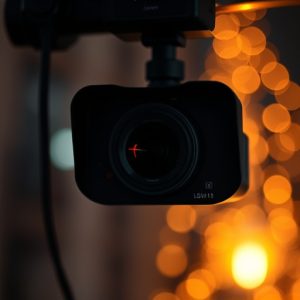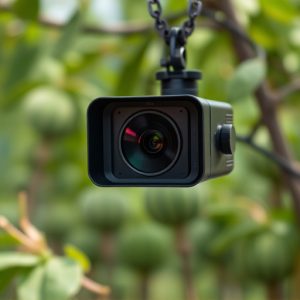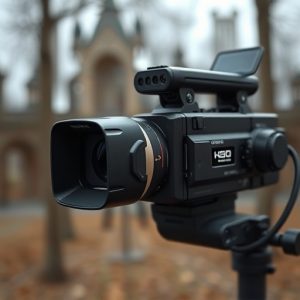Mobile Apps for Spy Equipment Detection: Technology, Privacy, and Legalities
Advanced indoor spy cameras with night vision have become smaller and more sophisticated, easily dis…….
Advanced indoor spy cameras with night vision have become smaller and more sophisticated, easily disguised as everyday items for covert surveillance. To combat this, specialized tools and apps are now available that use magnetic detectors, infrared cameras, frequency scanners, and visual/network analysis to identify these hidden devices. While mobile apps offer proactive security measures against covert surveillance, their unauthorized use raises legal and ethical concerns regarding data protection, privacy rights, and public trust.
In an era where privacy is increasingly at risk, the detection of spy equipment has become a pressing concern. This article explores how mobile apps are revolutionizing the fight against hidden surveillance devices, with a specific focus on indoor spy cameras equipped with night vision. We delve into the various types of spy gear and the unique challenges they pose, uncovering the advanced camera technology behind mobile app-based detection methods. Additionally, we navigate the complex landscape of privacy laws and ethical implications surrounding their use.
- Understanding Spy Equipment: Types and Their Detection Challenges
- Mobile Apps as a Defense: Unveiling Advanced Camera Technology
- Navigating Privacy Concerns: Legalities and Ethical Considerations of Spy App Usage
Understanding Spy Equipment: Types and Their Detection Challenges
Spy equipment, especially indoor spy cameras with night vision, have evolved significantly in recent years, becoming smaller, more advanced, and harder to detect. These devices can be disguised as everyday items like clocks, light bulbs, or even plants, making them appealing to those seeking covert surveillance. However, this same level of sophistication presents unique challenges when it comes to detection.
While technology has enabled these gadgets to operate discreetly, it has also increased the need for specialized tools and knowledge to identify them. Common methods include using magnetic detectors to pick up hidden magnets, infrared cameras to visualize heat signatures, and frequency scanners to uncover wireless signals. Advanced apps, designed to analyze visual cues or unusual behavior, can even help in detecting these devices by identifying telltale signs like distorted images, irregular lighting patterns, or unexpected connections on a network.
Mobile Apps as a Defense: Unveiling Advanced Camera Technology
Mobile Apps as a Defense: Unveiling Advanced Camera Technology
In today’s digital era, mobile apps have emerged as a powerful tool in the battle against covert surveillance and spy equipment. One of the most significant advancements is the integration of advanced camera technology, particularly Indoor Spy Cameras With Night Vision. These innovative devices are designed to detect and expose hidden cameras, ensuring individuals’ privacy and security. By utilizing specialized apps, users can now proactively search for and identify potential spy equipment in their homes, offices, or any other enclosed spaces.
The sophisticated algorithms within these mobile applications analyze visual data in real-time, capable of identifying subtle patterns and anomalies that may indicate the presence of covert cameras. Night vision capabilities further enhance their effectiveness, allowing users to uncover hidden devices operating in low-light conditions. This technology empowers individuals to take control of their privacy, offering a proactive defense against sneaky surveillance attempts.
Navigating Privacy Concerns: Legalities and Ethical Considerations of Spy App Usage
The rise of mobile apps offering spy equipment detection services has sparked a crucial debate around privacy and ethical boundaries. While these applications purport to aid in identifying hidden cameras, such as Indoor Spy Camera With Night Vision, their usage raises significant legal and moral questions. Many countries have stringent data protection laws that govern the collection, storage, and sharing of personal information, including images and videos captured by mobile devices. Unauthorized use of spy apps can infringe upon an individual’s right to privacy, leading to potential legal repercussions.
Furthermore, the ethical implications cannot be overlooked. Spy apps often operate in the background without explicit user consent, creating a pervasive surveillance environment. This practice may foster a sense of mistrust and invade personal spaces, especially if used maliciously. As technology advances, it’s essential to strike a balance between ensuring security and preserving individual privacy rights, particularly when considering the prevalence of sophisticated spy equipment like those capable of night vision.
Mobile apps are transforming the way we detect spy equipment, particularly indoor spy cameras with night vision, by leveraging advanced camera technology. However, as we’ve discussed, navigating privacy concerns and legalities is crucial for responsible usage. Balancing security needs with individual privacy remains a complex challenge, but ongoing innovations in mobile app capabilities offer hope for more effective protection against these modern surveillance threats.


